
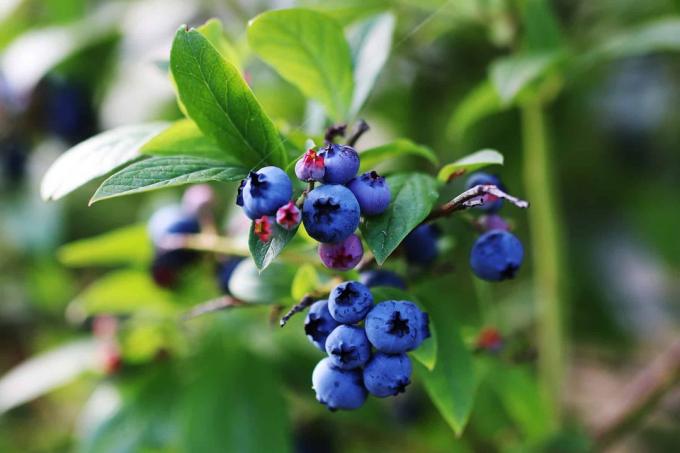
Table of contents
- Raspberries and blackberries
- currants
- nightshade family
- Cabbage plants
- More bad planting neighbors
- Allium family
- Frequently Asked Questions (FAQ)
Blueberry bushes are also popular plants in local gardens as they are very healthy fruits that can be used in many ways in the kitchen. However, caution is advised in the environment in which the blueberries are planted, as they do not get along well with all of their plant neighbors. The list below provides information about the bad neighbors for blueberries.
Raspberries and blackberries

Too bad neighbors for blueberries (Vaccinium myrtillus) include raspberries (Rubus idaeus) and the blackberries (Rubus). As a rule, when creating a garden, berry bushes are cultivated together in a corner or a garden bed. But that's not a good decision in this case Blueberries should be planted far enough away from these neighbors:
- Blackberries and raspberries are susceptible plants
- Fungal infections such as mildew quickly occur
- the plants transmit the diseases to the blueberries
- Pests are also transmitted
- This can quickly lead to a crop failure
currants
Even if it is often claimed otherwise, all varieties of currants should (Ribes), which include red, white, black and josta berries (Ribes × nidigrolaria) do not belong in direct proximity to the blueberries. Although the plants have the same soil requirements, there are other problems that need to be taken into account:
- Disease vectors on blueberries
- Currant bushes are quickly attacked by pests
- then attack the blueberries in the immediate vicinity

A notice:
As a rule, solitary blueberries are not affected by the currant leaf louse. However, if the plants are in close proximity to the currants, the pest will also cause leaf deformation on the blueberries.
nightshade family
Nightshades are bad neighbors for blueberries. Because the plants compete with each other. The nightshade plants need a lot of nutrients and water, which they extract from the soil nearby. However, this can lead to poorer growth and a smaller harvest for blueberries.
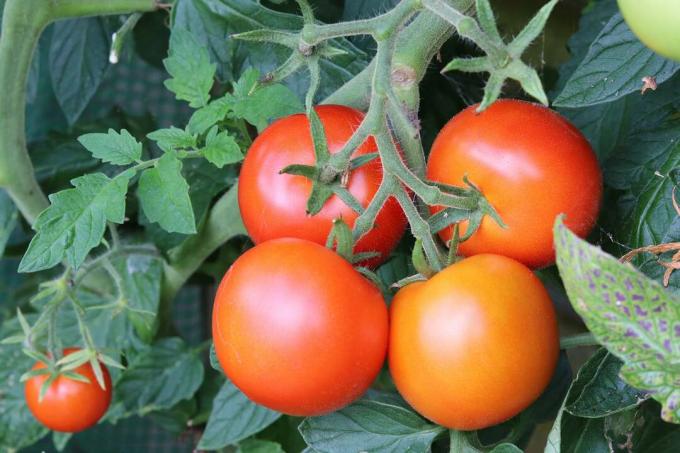
The nightshade plants that should not be in close proximity to blueberries include:
- eggplant (Solanum melongena)
- paprika (Capsicum)
- tomatoes (Solanum lycopersicum)
Tip:
Another reason why the nightshades are bad neighbors for blueberries is this different requirements for the substrate, because the desired pH value for the soil is different to that of blueberries another.
Cabbage plants
It is ideal if avoiding any cabbage plants near the Cultivating blueberry bushes. These should definitely be planted in a separate bed. The soil for cabbage needs a higher pH value than the substrate for blueberries.

But competition for water and nutrients can also lead to poor growth and a low harvest for blueberries. The following cabbage plants should not be in a bed with blueberries:
- cauliflower (Brassica oleracea var. botrytis L.)
- broccoli (Brassica oleracea var. italica)
- Chinese cabbage (Brassica rapa ssp. pekinensis)
- Brussels sprouts (Brassica oleracea var. gemmifera)
- White cabbage (Brassica oleracea convar. Capitata var. Alba)
More bad planting neighbors
However, there are many other poor plant neighbors that should not be planted in the same bed with the blueberries because the demands on the substrate are different. This not only affects the blueberries, but also all the plants cultivated here together.
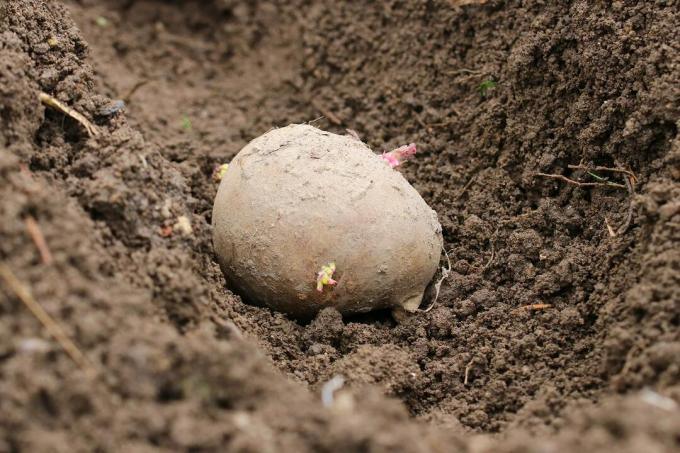
This generally results in poorer growth for all plants and lower harvest yields:
- all melon plants
- Hazelnut bushes (Corylus avellana)
- potatoes (Solanum tuberosum)
A notice:
Blueberries require a low soil pH, similar to azaleas or rhododendrons. Therefore, all plants that require a neutral or even high pH value are very poor plant neighbors for blueberries.
Allium family
Plants that belong to the allium family are also among the bad plant neighbors for blueberries. Here too, the demands on the substrate do not match. Leeks should not be planted in a bed with blueberries:
- spring onions (Allium fistulosum)
- Garlic (Allium sativum)
- Leek (Allium porrum)
- Onions (Allium cepa)
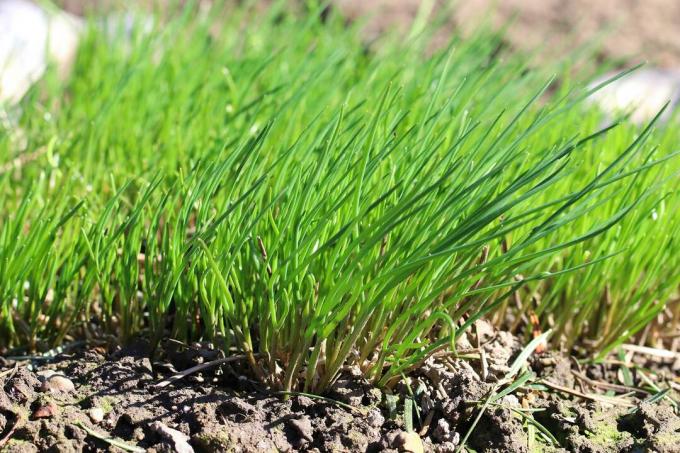
A notice:
Garlic or onions are often placed between other plants to keep pests away. But this is not a good measure in the case of blueberries and joint cultivation should definitely be avoided here.
Frequently Asked Questions (FAQ)
Blueberries can also be grown in pots. This is actually good protection. Because if you plant the plants solitary in the container, there will be no competition at all with other plants in the immediate vicinity with which the blueberries do not get along would. Because in the pot, the plants have sole access to the substrate and moisture.
The blueberries are actually considered to be quite robust and there is usually no fear of pest or disease infestation. However, the optimal location is also important so that the plants are not attacked. However, poor plant neighbors that are susceptible to various diseases and pests can also promote an infestation of blueberries.
The ideal location is bright and sunny. The substrate at the location should be nutrient-rich, humic, moist and well-drained so that a rich harvest can be expected. It makes sense to plant the blueberries solitary on a garden bed or to create a hedge with the bushes, which ideally is not a mixed hedge.
In fact, mixed cultures in the bed are always recommended. However, not all plants get along with each other because different demands are placed on the soil. But there are also various plants that can be planted in the immediate vicinity of the blueberry bushes and thus support them in growth and fruit formation or keep pests away can.
 Home editorial team
Home editorial team
Find out more about soft fruit
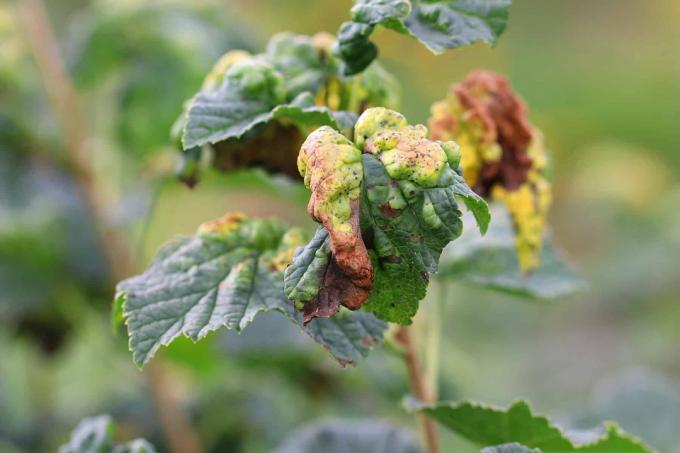
Leaf diseases on currants: leaf drop disease & co
Diseases on the leaves of currants are not uncommon. They are triggered by fungi, viruses or various pests nest. Many problems can be solved with simple home remedies. Proper care also helps prevent many illnesses.

10 good neighbors of raspberries | Mixed culture
Raspberries should grow healthily for several years and, if possible, give us a rich harvest every time. Choosing a good neighborhood helps achieve this goal. But who does the berry plant like to share the bed with and who doesn't?

Honeyberry, Lonicera kamtschatica: 12 tips on location and care
In the local latitudes, the robust honeyberry can be easily cultivated and propagated because it does not place great demands on the site conditions and care measures. If you pay attention to certain factors when planting and cutting, you can harvest sweet fruits in spring.

Cultivated blueberries: 4 important location criteria
The blueberry offers delicious fruits and is a visually appealing tree. However, the cultivated form of the blueberry differs greatly in terms of the demands placed on its location compared to its wild relatives. In the right location, cultivated blueberries can yield several kilos.
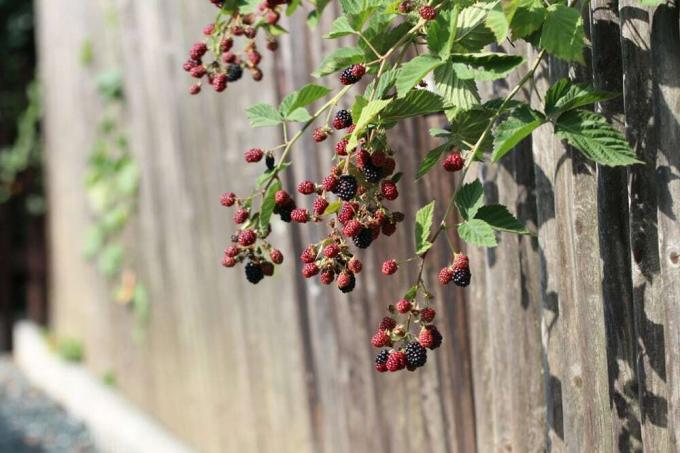
Blackberry location: 4 important criteria
Blackberries are a popular sweet fruit that is easy to care for. With a suitable location, plant health is guaranteed and the yield can be increased. The right location depends on the variety type, because not every blackberry is insensitive to low temperatures.

Fighting lice on currants | 8 home remedies for aphids
When the first leaves appear on the currants in spring, aphids are often already on the bushes. The small insects are hidden under the leaves and can quickly cause a lot of damage. That's why lice should be combated early, ideally with natural home remedies.



